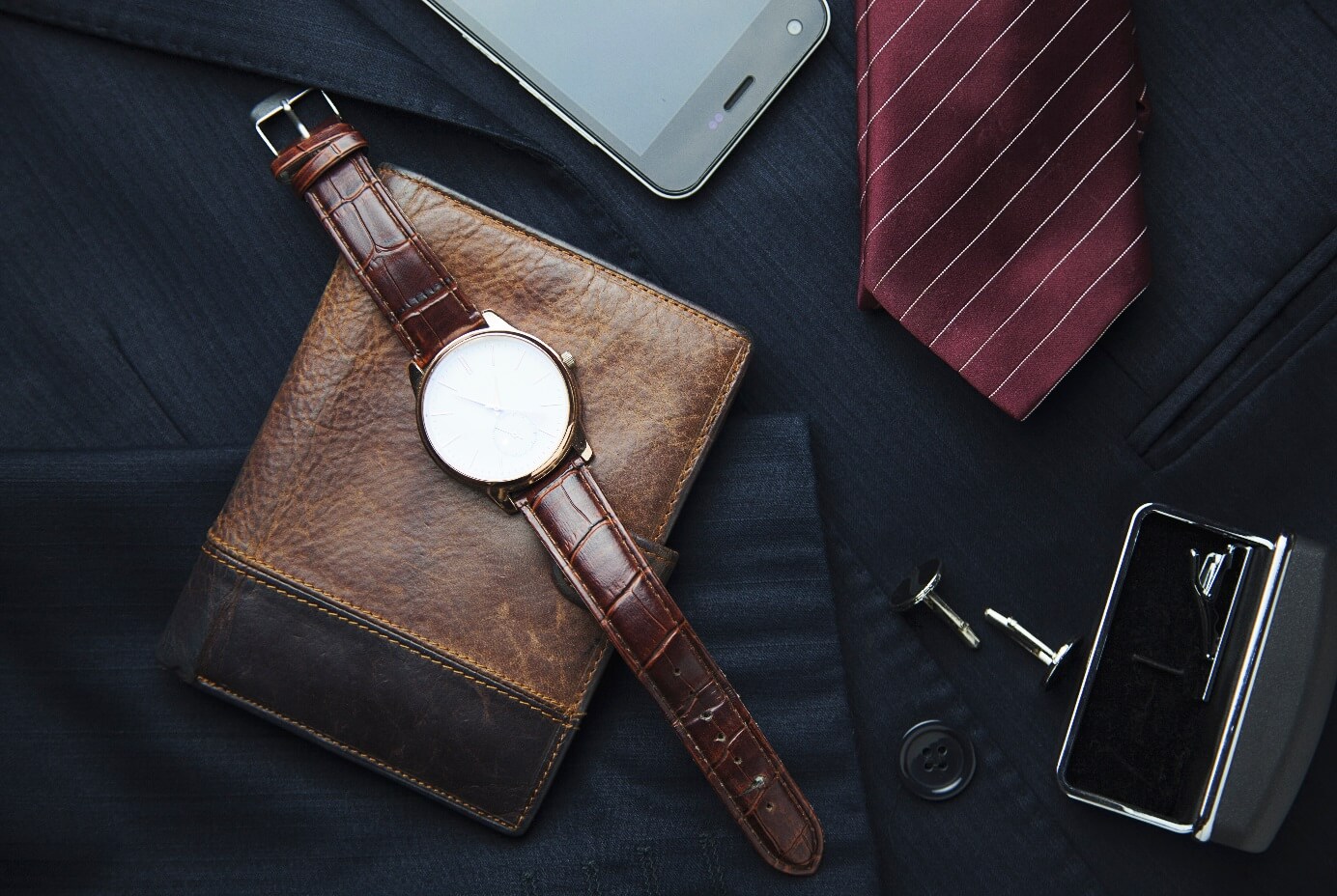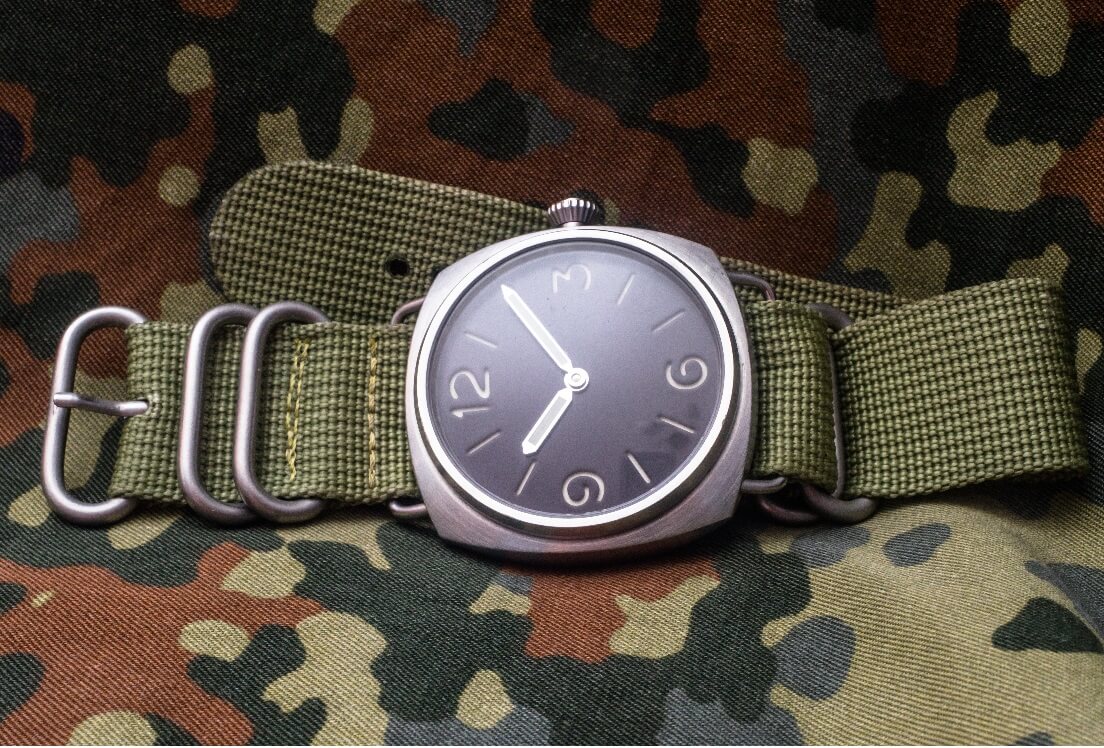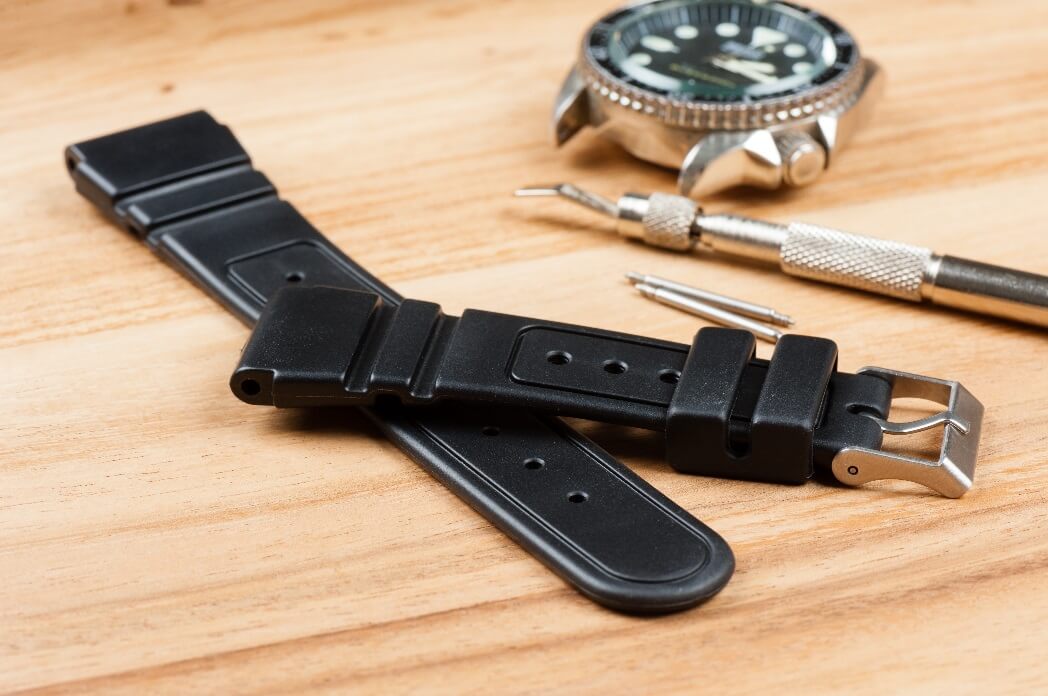Posted by Watch Warehouse Experts on Jun 24, 2022
Watch Bands & Fitting: Everything You Need to Know About Your Watch Band
So you finally got yourself a new watch. Maybe you’ve just entered the market and haven’t pulled the trigger yet. Wherever you are in the process of being or becoming a watch owner, you’ve probably already given a good deal of thought to the type of case that might suit you best. You’ve probably shopped colors and sizes, brands and complications, day/date windows, and everything else that might be contained within the case, but have you given much thought to your band? Choosing between a leather or a stainless band is probably the most obvious fork in the road, but choosing a band goes much deeper than that.
What is a Perfect Watch Fit?
Alright, stop everything. The first thing that you’ll want to do is measure your wrist size. Do a quick Google search for printable ruler, or simply wrap a piece of string around your wrist and then measure the total length to find your wrist size. The average wrist is about 7.25 inches, but there is obviously a great deal of variation to be had there.
Is It Important to Make Sure My Watch Fits Correctly?
Yes, absolutely it is very important to perfectly fit a watch to your wrist, especially if you will be wearing it every day. A slightly smaller sizing will put pressure on the lugs and pins/buckles, potentially wearing down and breaking your band over time. If your watch is too loose it will not only be an annoyance but it will also likely bang into things a lot more often and cause damage to the case and even to the delicate movement inside.
One of the most common ways that we see watches damaged is by an improperly sized band coming loose and causing the watch case to fly off or fall straight to the floor. As you can imagine, just how expensive a mistake like this can be can be huge when you’re talking about an expensive watch like a Rolex or a Panerai, etc.
About Stainless Steel or Metal Watch
Bands

Stainless steel straps are probably the most popular material for a watch band. Stainless steel straps are versatile, they look good, and they can last a lifetime. This is the classic look for watches, and you can find metal bands that vary so greatly in price due to the inclusion of various precious metals like gold so you’ll always be able to find something to fit your style or your watch case.
The biggest concern for metal bands is that they can scratch pretty easily, but what many people don’t realize is that you can very easily polish out most nicks and scratches from any band at your local jewelers or watch repair store. It won’t damage the metal, and as long as there weren’t any particularly deep scratches they will all be gone completely with a good polishing and the band will look brand new again.
Choosing the Right Size for a Stainless Steel or Metal Band
Stainless Steel bands are versatile, they look good, and they can last a lifetime. A metal band will generally be worn a bit looser than a leather or rubber band for comfort and ease of movement. Your ideal metal band size will usually be one centimeter larger than your wrist size. Just make sure you are measuring the lug-to-lug measurement of your case and adding that to the band length for accurate representation of the size of the watch on your wrist. A stainless steel band might fit you perfectly on one watch, but if you were to change the case to a smaller or larger one it will no longer fit.
About Leather Strap

A more
sophisticated look, a leather strap can still be classy and luxurious, but it
is generally considered a bit less flashy then a metal strap. The first clear
benefit is that a leather strap will almost always be lighter than a metal one.
Another great aspect of leather straps is that because of the various sizing
holes in the band you shouldn’t have to take them to be sized, just place the
watch on the hole that’s comfortable for you and you’re done. Unfortunately,
leather will get damaged over time by water, which is probably the biggest
downside to having a leather strap, but that is not to say that even a splash
of water here and there would do much damage – this applies more to diving in saltwater.
Leather straps can easily combine with just about any outfit, business or casual.
Leather is usually quite comfortable and non-abrasive to the wrist. Leather
straps are also generally pretty breathable and able to absorb some
perspiration, making it more comfortable then, say, a rubber strap.
Choosing the Right Size for a Leather or Rubber Band
For leather straps, you must be sure to include the buckle when measuring the length of the strap. You’ll need a little more added length with leather as they are often quite stiff, especially a new leather band. 2 centimeters up from your wrist measurement should provide for a perfect fit without any pressure but also little to no movement of the watch itself on your wrist. Again, make sure that any measurements you take for a new or as of yet uninstalled band include the size of the watch case in your considerations (see “How Do I Properly Measure a Watch Case” above)
About NATO Straps

Originally introduced in 1973 by the British Ministry of Defense to be used by soldiers in the field, the NATO strap is a unique option for watch owners that are looking for added safety or maybe just have a thing for the “military look.” Some of the clear benefits to a NATO-style strap include the simple design, affordable costs, variety, and perhaps most importantly watch safety. The reason a NATO strap is more safe than most other straps has to do with the design itself. The strap loops underneath your watch and through the spring bars, so if the watch were to get stuck on something it will likely be able to prevent the spring bar from breaking and the watch falling off your wrist. The pressure would be applied right back onto the strap instead of the spring bars if you were to tug on it.
This added safety can be great to prevent you from dropping your watch when out on the town, but it is also considered a must by many who take their watches down to dive with them. Like a leather strap, sizing of NATO straps are built into the design so you’ll never have to take it to be sized at a watch or jewelry store.
Choosing the Right Size for a NATO Strap
Due to the design of NATO straps your watch case will sit up a bit higher off of your wrist due to the extra material underneath. While a stainless steel band calls for one centimeter above your wrist size, and a leather strap calls for 2; with a NATO strap you are going to want to look for a strap that is about 2.5cm larger than your wrist size for the perfect fit. There are a great many forms of NATO straps, but you are usually able to thread the material back through the rings to increase or decrease the length of the strap by design, making it much easier to ultimately size these straps for you.
How Large are Standard Men’s & Women’s Watch Bands?
There is no guaranteed international standard for any watch band: stainless, leather or otherwise. However, most present-day watchmakers will adhere to some basic standards most of the time. Women’s watch bands will usually fit a wrist up to 7.5 inches, whereas a men’s standard watch band will fit a wrist up to 8.5 inches. Generally “bangle-style” watches for women will be much smaller than a standard metal or leather women’s band.
If you’re shopping for a new watch and the band size isn’t listed, ask the seller to provide you with the exact measurements of the band with the watch case included: this will tell you exactly how large that watch will be and can be used with your wrist measurement to determine if it’ll fit. If you are looking to buy just a band, make sure to measure the height of the watch case and apply that to the band size to get your total watch length on the wrist.
How do I Know If I Can Change my Watch Band?
Just about every watch case out there features the capability of changing a band. Watch bands and straps connect to watch cases by something known as the lugs. To know what size band will fit your watch, you need only to measure the lug size on the watch or look it up, and you’ll then be able to fit that watch case with any band with that same lug size.
How Do I Properly Measure a Watch Case for Band Sizing?
You need to get your watch case measurements if you’re trying to size your watch. Take your watch case and set it sideways, using measuring tape to measure from one spring pinhole to the other. These holes will only be visible if your watch case is not attached to any strap, and would be the holes that the strap itself would secure into. If your watch already has the strap attached that you are trying to size, just leave it on and measure the length of the whole thing (case included) for the measurement of your whole watch.
What Type of Band is Right for Me?

At the end of the day choosing the type of band that’s right for you comes down to personal preference and utility. If you plan to be doing any diving you definitely want to go with a metal, rubber, or fabric band as the water will wear on the leather over time. If you’re looking for an every-day-wear watch and don’t already have any clear preference for one or the other, you should ask yourself what you feel more comfortable with, both in physical appearance and feel of it on your wrist.
If stainless feels a bit bulky and uncomfortable, give a leather or fabric band a try. If this is a watch that you are purchasing only to be worn on special occasions or with a particular outfit, consider the event and the message you want to convey with your outfit: leather is usually the more “humble” option.
What is the Importance of the Shape of My Watch Case?
Some people have more flat wrists on the top with less curvature, so the curvature of the case itself can also play a role in the fit of the watch as a whole. Some watches have more of a curve on the backside of the case to mimic the wrist, whereas some other watches have rigidly-straight case backs. You probably won’t be able to find a measurement of this curvature when shopping for watches online, but it’s something to keep in mind.
The Conclusion
It’s a lot of fun shopping for watches. We all love looking at the pretty colors and fancy complications, but we’re glad that we were able to set a bit of time aside to talk about what’s really holding it all together: Your watch band!
